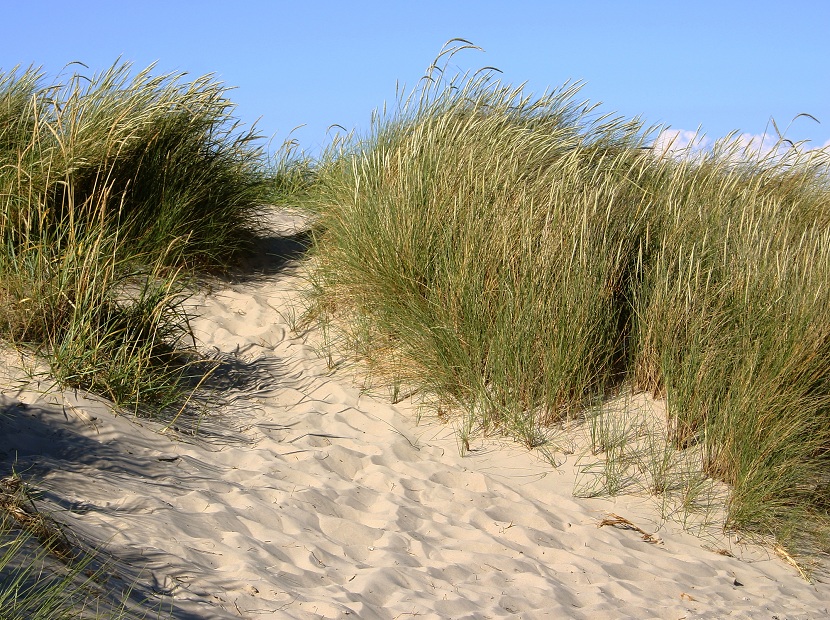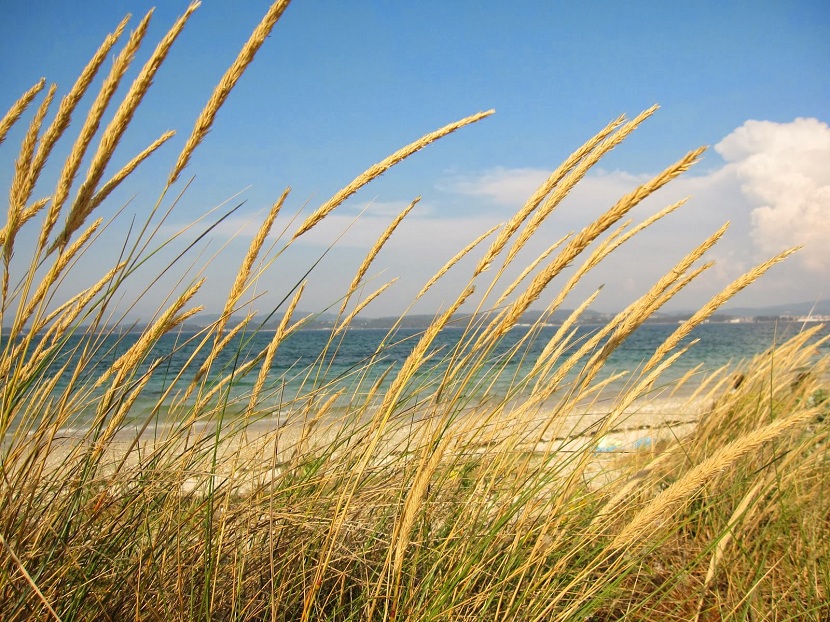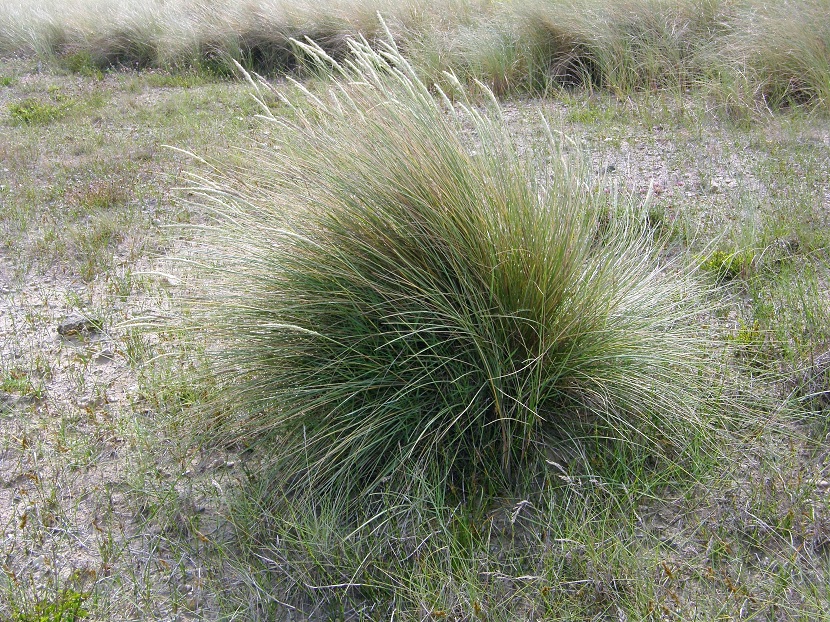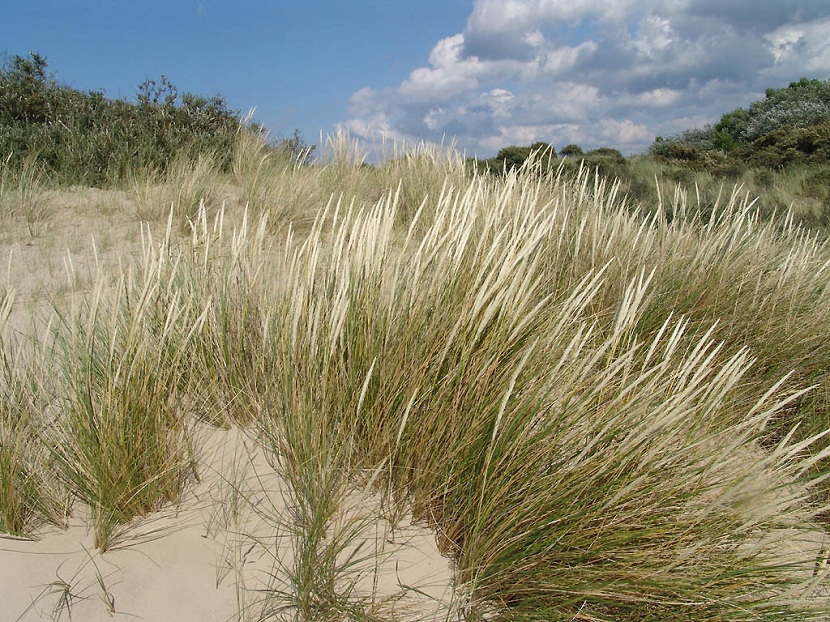
One of the plants that we can find in numerous dunes and drier ecosystems of the Iberian Peninsula is the ammophila arenaria. It belongs to the grass family and is known by the common name of barrón, arenaria, reed and marran grass in English. It can usually be found in much of Europe and the coasts of North Africa in the coastal area.
In this article we are going to explain all the characteristics and curiosities of the Ammophila arenaria.
Key features

It is a plant that has a relatively robust and compact appearance. It is a type of rhizomatous plant that has rigid convolute type leaves. They are glaucous green in color and form lighter brown panicles. They are usually between 10 and 25 centimeters long. They are easy to plant as they grow fast and have very little care.
We can find them normally attached to various coastal dunes and other groups of grasses. It has good resistance to cold. They are herbaceous sport plants that usually have a height of between 50 and 100 centimeters normally. The leaves are persistent so they remain throughout the year regardless of temperatures and rainfall.
They are capable of withstanding temperatures down to -28 degrees. Among its frequent uses we have a planting density in gardening of about 6 to 8 plants per square meter. It is used to decorate parks near the coast. Its flowering takes place during the spring. You can find it naturally grouped with other plants of the grass family that are also indigenous and persistent. It adapts easily to coastal areas such as dunes. They are considered graminoid and junciform.
They originate from the entire European coastline and extend from Norway to the Mediterranean regions. In their natural distribution we find that they are distributed throughout the coast of much of Europe and the coasts of North Africa. Being quite resistant to cold, we can find them on the coasts of Iceland and North America. They are also present in the Balearic Islands.
Regarding its habitat, They live on the ridges of the dunes directly exposed to the sea wind and up to a height of about 50 meters above sea level.
Necessary requirements of the ammophila arenaria

This plant does not need many requirements since it is quite resistant to various adverse conditions. They do not require a lot of humidity so they can survive quite well in dry environments. As for its location, it needs to be in full sun.
They develop quite well in limestone and siliceous soils. To find its optimal development, it must have a soil with naturally sandy texture. We have already mentioned previously that their native habitat is in the sand of the dunes. It is capable of supporting soils poor in nutrients and organic matter, so it will not require much care. In case we want to have them in our gardens we should not worry about the use of fertilizer. Nor is it a plant that is susceptible to different pests and diseases typical of gardens.
If we want to sow it in our garden we must bear in mind that the substrate must be draining. That is, irrigation water is not stored and is capable of reducing humidity quickly. It is convenient to carry out an annual pruning before it begins to sprout and bloom during the spring season. It tolerates severe pruning quite well so we can adapt it to the environment we have in the garden.
The main form of reproduction of the ammophila arenaria it is vegetative. It does so through its rhizomes that are acquiring a great development in the subsoil. In this way, they are able to spread over wide areas of sandy texture. If it was a soil with a loamy texture, it could not be spread optimally. Root development contributes to fixation in littoral dunes. They are able to hold perfectly on sandy soils with their rhizomes developed and allow other species to coexist alongside them.
Adaptations and curiosities of the ammophila arenaria
Because it is a lively grass it escapes from lasting more than two years and each spring it sprouts again. Its strong rhizomes are capable of extending deep into sandy soil. From these rhizomes the leaves are stiff and sharp, giving them a reed-like appearance.
It is usually found in habitats with grassland and scrub-type species. Above all, on sandy beaches and dunes and on dry soils with high salinity. Given the extreme conditions of the environments in which it has to develop, the ammophila arenaria has been able to generate various adaptations over the years. It is adapted to withstand long periods of drought, strong winds and high levels of salinity. These plants are fully adapted to be able to colonize a mobile substrate and in which the water seeps quickly.
Flowering takes place in the months of April to June. These plants can be seen in the province of Malaga and are found on the beaches and remains of dunes that are still preserved.
As a curiosity, this plant contributes greatly to supporting the soil and allowing other species to live in it. It has a kind of special function in the ecosystem. And it is that it serves as a dike or palisade to stop the advance of the sand after erosion. It is one of the best plants adapted to mobile dune systems. Since it has a similar appearance to the reed, it can withstand strong winds without being damaged. It is a very flexible plant. Its name comes from the sheet "love for the sand."
Given the clear ecosystem in which it lives in the ammophila arenaria, it is not usually confused by anyone. On the other hand, during the time when it does not have flowers, it can be confused with esparto.
As you can see, there are numerous species capable of adapting to extreme environments. I hope that with this information you can learn more about the Ammophila arenaria.
